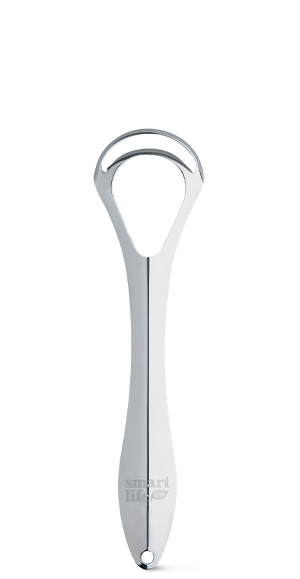What pops into your mind when you picture living fully sustainably? Maybe a small farm far from main roads with goats, homemade bread, a solar-powered generator, and no internet access. While those off-the-grid lifestyles work for some, they’re far from the only path toward sustainability. If you live in an apartment, drive a car, or enjoy takeout every now and then, you can still make a significant difference without abandoning convenience or comfort.
This guide is designed to walk you through small, approachable shifts you can make every day to live more responsibly. It consists of simple swaps and mindful habits that align with your routine and budget.
Focus on Daily Replacements
Let’s start with your morning routine. The products you reach for, such as your toothbrush, floss, or even your tongue scraper, can have long-term consequences for the planet. Many everyday items are made from plastic that doesn’t break down for centuries. But there are easy fixes.
You can switch to eco-conscious options like bamboo toothbrushes or reusable tongue scrapers made from greener materials. If you floss, consider floss picks designed to reduce waste, or invest in a dental hygiene starter kit to revamp your entire routine.
If you have kids, these habits can be a great teaching opportunity. Using kids' flossers helps young children understand the importance of waste reduction from an early age.
Beyond personal hygiene, carry reusable shopping bags in your car or backpack. Say no to plastic utensils and toss a metal straw into your work bag. Replace single-use cleaners with refillable cleaning supplies. These might seem like small moves, but together, they make a powerful statement and a measurable impact.
Eat With the Planet in Mind
Food choices are another area where small changes can add up to big impacts. Global food production is responsible for a large portion of greenhouse gas emissions, especially when it comes to red meat and dairy. While you don’t need to go vegan, you can reduce your environmental impact just by shifting what goes on your plate.
Try eating less red meat throughout the week. Consider making one dinner each week completely plant-based or swapping beef for lentils in your chili recipe. Buying seasonal produce is better for the environment, tastes fresher, and usually costs less. Whenever possible, shop locally at farmers' markets or in community-supported agriculture (CSA) to cut down on the carbon cost of transportation.
If you’re looking for inspiration, experiment with a low-emission recipe that uses ingredients with a smaller carbon footprint. You’ll probably discover a few new favorites in the process.
Rethink Energy and Appliance Use
You don’t need to unplug from the grid completely to reduce your energy use. A few simple adjustments can help lower your carbon footprint without giving up electricity.
Start with your appliances by switching to energy-efficient models when it’s time to replace old ones. Modern replacements are more energy-efficient and typically perform more reliably in the long run, compared ot older counterparts. Use LED lighting throughout your home; it lasts longer and draws less power than incandescent bulbs and compact fluorescent lamps. Also, make it a habit to unplug electronics like chargers and coffee makers when you’re not using them.
A personalized checklist to lower energy consumption can also help you stay consistent. Think about your habits. Do you leave lights on in empty rooms? Is your thermostat set too high when you’re asleep or away? Little tweaks to your energy usage can lead to real savings on your bill and for the environment.
Choose Sustainable Fashion and Laundry Habits
The fashion industry, specifically fast fashion production, is a major contributor to global pollution. If you’re buying trendy clothes that fall apart after a few wears, it’s time to reconsider how you shop. Choose secondhand clothing when you can. Thrift stores, online resale platforms, and clothing swaps offer stylish options that reduce demand for new production.
Even how you do laundry matters. Wash in cold water, which saves energy and helps clothes last longer. Consider air-drying instead of using the dryer; this is particularly helpful for heavier items like jeans and bedding. Wait to do laundry until you have a full load to reduce water and electricity use.
These changes may seem small, but they seriously reduce waste and pollution when it comes to clothing and fashion, especially when multiplied over a year or two.
Improve Your Home’s Carbon Footprint Without a Major Renovation
You don’t need to tear your house apart to make it more sustainable. A few strategic upgrades can make your space more efficient and more comfortable.
Weatherproof doors and windows to prevent drafts and keep heat or cool air from escaping. Add insulation in places like the attic to help maintain temperature year-round. If you want a tech upgrade, a smart thermostat can help manage heating and cooling automatically, which saves energy without sacrificing comfort.
Renters aren’t left out of the sustainability equation. Products like door sweeps, draft stoppers, and removable insulation kits are budget-friendly and easy to install and remove. Whether you own or rent, there’s always room to make your space more energy-smart.
How To Maintain Long-term Sustainability
Living sustainably is about building a mindset that prioritizes durability, minimalism, and mindfulness. Start with reducing consumption. Don’t buy something unless you truly need it. When you do, choose items made to last, ones that can be repaired or repurposed. Reuse what you already own before recycling or tossing it. When you recycle, ensure it’s done correctly, based on local guidelines.
You’ll also want to support companies prioritizing sustainability across their manufacturing, packaging, and delivery processes. These businesses help create a circular economy, where resources are used longer and waste is minimized.
Even small daily habits, such as brushing your teeth, contribute to your morning routine's overall carbon footprint. Reflecting on these choices can help you identify which changes are realistic and meaningful in your lifestyle.
Sustainability doesn’t require a remote farm property, a composting toilet, or off-the-grid isolation. It starts with how you live your life today, what you buy, how you cook, what you wear, and how you care for your home.
Making these habits part of your daily rhythm helps reduce your environmental impact without giving up the conveniences on which you rely.






